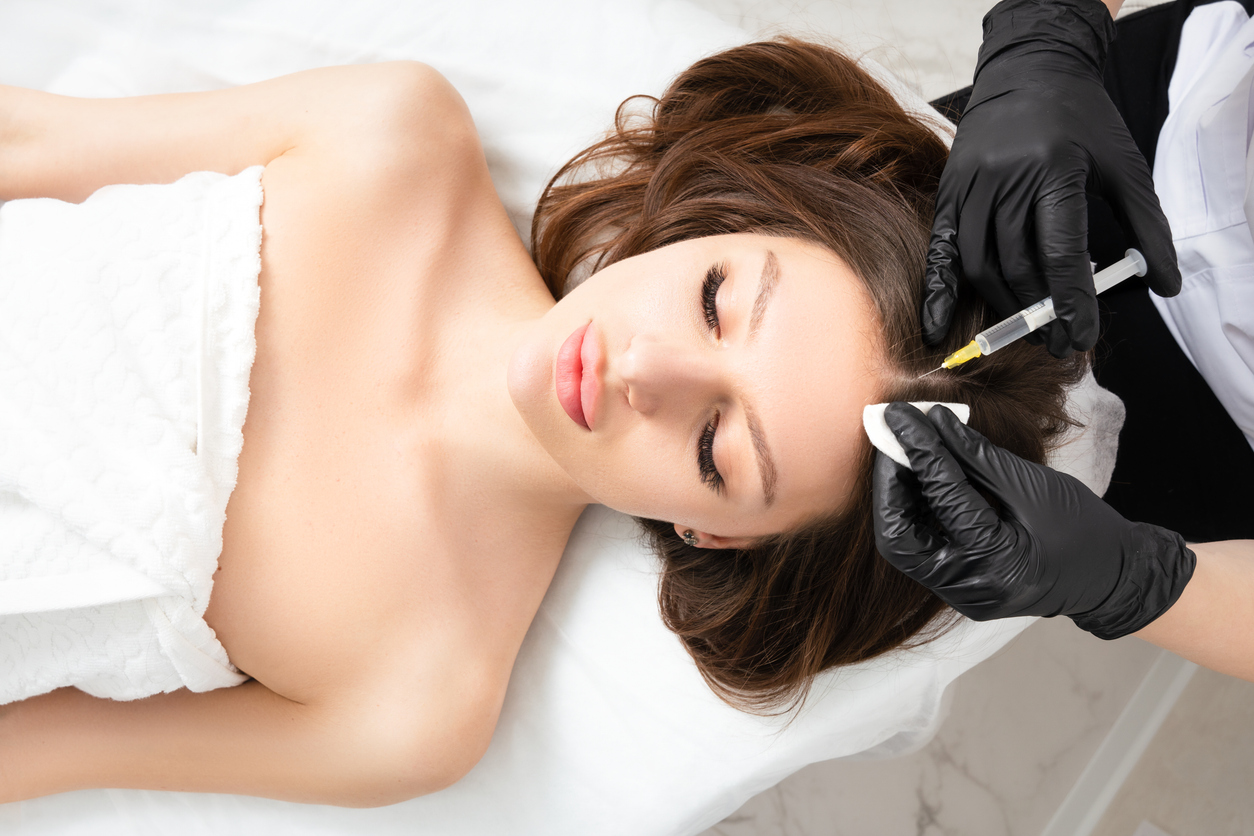
Understanding PRP For Hair Loss
Using industry leading technology from Emcyte Biotechnology our clinic provides a non-surgical, effective, evidence-based solution to thinning hair.
What are Platelets?
Platelets, a component of blood, are some of the body’s “first responders” that arrive to stop the bleeding and promote healing when a person sustains a cut or wound. This healing process is harnessed to initiate hair regrowth and retention of current hair follicles. PRP contains a range of growth factors and proteins that speed tissue repair. As some types of hair loss result from damage to hair follicles, researchers initially hypothesized that PRP could help regrow hair by reversing the process that occurs in alopecia.
PRP treatments can be done within about one hour in the office, and provide a short recovery time with rapid long-term benefits. The patient is set up comfortably and blood is drawn from a vein through a small butterfly needle. This blood is then spun to separate the PRP from the blood components not beneficial for skin aesthetics. This PRP is then injected into the regions of interest through small needles after the skin has been prepped with numbing agents and cleansed. The cell-renewal properties that stimulate the scalp to encourage hair growth and the introduction of platelets and white blood cells through PRP can amplify the body’s naturally-occurring wound healing mechanism.
Results typically show in 3-6 months
Increased hair counts
Release of platelet derived growth factors
Activation of stem cells for hair growth
Non-Surgical Treatment
Three Simple Steps
Step 1: Blood Draw
A blood draw from the patient's arm is the first step of the treatment. Next, the blood sample processed in an Emcyte centrifuge which spins the blood at high speeds to separate the platelets from other blood components.
Step 2: Preparation of the PRP
Platelet-Rich Plasma is created during the centrifuge process as the platelets are concentrated. The PRP component of the blood is rich in growth factors and proteins that are essential for tissue healing and repair.
Step 3: Injection Into Scalp
The final step involves carefully numbing the area of treatment to minimize discomfort during the proceedure. Next the PRP is injected into the patient’s scalp, targeting the areas where hair loss is most prominent to maximize the stimulation of hair growth and rejuvenation.
Side Effects
Absolute contraindication for PRP include critical thrombocytopenia, platelet dysfunction, hemodynamic instability.
PRP has been shown to be quite safe as the PRP solution consists of a person’s own blood components. Our clinic's sterile processes and attention to detail limit the possibility of adverse events.
- Scalp Irritation
- Slight Swelling at Injection site
- Risk of Infection


